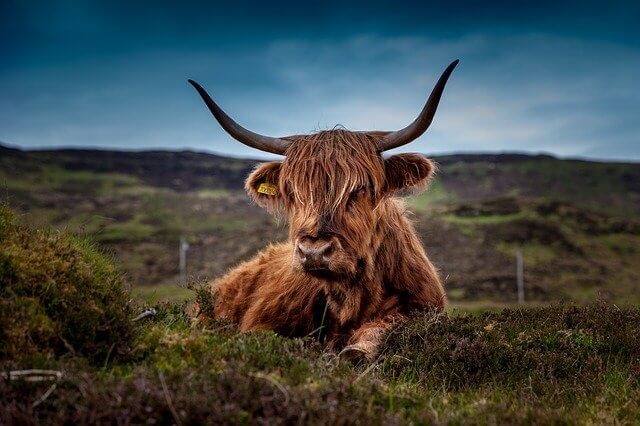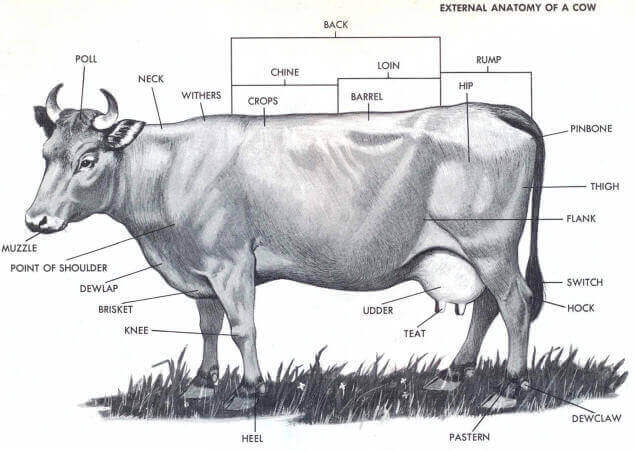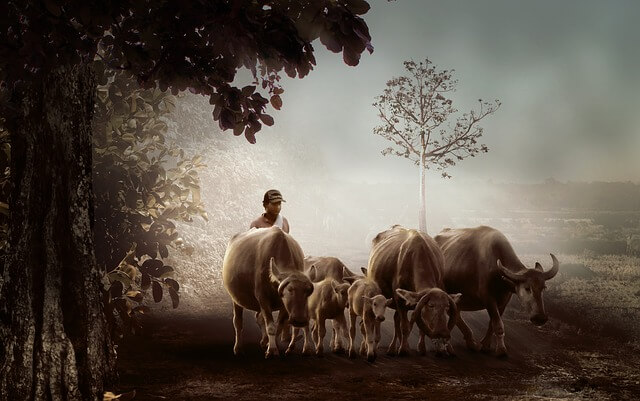What are the characteristics, features, anatomy, species and diseases of cattle? Information about cattle.

Source: pixabay.com
CATTLE. Cattle are the most important of all livestock animals. They supply approximately 50% of the world’s meat and 95% of the world’s milk, and their hides are used to produce 80% of the leather used for shoes and other products. All domestic cattle are members of the genus Bos in the cattle family (Bovidae).
Breeding
The principles of breeding are the same for both beef and dairy cattle. The gestation period of cattle is about 280 days. The objective is for each cow to have one calf a year. This means that she must be mated with a bull in the third month subsequent to calving.
Improvement of Beef Cattle.
Most beef producers prefer to have their cows calve on pasture in the spring. Therefore, their breeding season is during the summer months. They usually use one bull for about every 20 to 30 cows.
Improvement of beef cattle through breeding is usually directed toward increasing the number and birth weights of calves and toward producing cattle with rapid growth, improved efficiency in utilizing feed, and greater meat value of their carcasses. In order to accomplish this, the breeder must keep accurate records of births and weights at various ages. With these records he can then sort out his best cattle, save them for breeding stock, and send the rest to market. The keeping of these records of performance is not presently a general practice among beef cattle breeders, but the more progressive breeders either keep their own records or belong to an organization which does it for them.
Improvement in Dairy Cattle.
Dairy cows usually produce slightly more milk if they give birth to their calves in the fall. The cooler weather and the regularity of winter feeding is responsible for the additional production. However, because of the year-round demand for milk on most markets, dairymen are breeding their cows to freshen all year around. This is possible because with modern dairy management the calves can be cared for in any season.
Improvement of dairy cattle through breeding is aimed at increasing milk production, obtaining an optimum butterfat content in the milk, and improving the physical traits of a cow that might help production or contribute to length of life. Record keeping and performance measures are equally as important for dairy cattle breeding as for beef cattle.

Source : Unknown
Systems of Mating.
In addition to selecting outstanding breeding stock cattle breeders use several systems of mating: outbreeding, inbreeding, line-breeding, and crossbreeding. Most cattlemen use outbreeding, that is, they mate the best animals but make sure they are unrelated, but some breeders do mate related animals in a system called inbreeding. Inbreeding is difficult to carry out successfully with cattle, and only a few breeders have produced outstanding herds with it. Linebreeding, a form of inbreeding where matings are made between descendants of an outstanding ancestor, is often practiced; however, the extent to which real improvement can be made by linebreeding as compared to outbreeding is a matter of debate among cattle breeders.
Research has shown that crossbreeding, that is, the mating of animals from different breeds, is a successful system of mating for beef cattle. Crossbred steers grow faster and yield as much high quality meat as other steers. Crossbred cows produce more calves and have more milk for their calves than other beef cows. For these reasons crossbreeding is a rapidly growing practice among beef producers. On the other hand, research has not revealed substantial benefits from the crossbreeding of dairy cattle.

Source: pixabay.com
Artificial Insemination.
One of the most rapidly growing practices in cattle breeding is artificial insemination. A few outstanding bulls are kept at a central location, and specially trained technicians, using carefully developed scientific techniques, inseminate the cows in a large number of herds. In this manner, several thousand calves can be sired by one bull in one year instead of the usual 20 to 50 calves produced by natural mating. Through artificial insemination the inheritance of an unusually superior bull can be passed on to many more lOffspring than was previously possible. Approximately 48% of the dairy cows in the United States are bred by artificial insemination. The practice is also increasing rapidly for beef cattle.